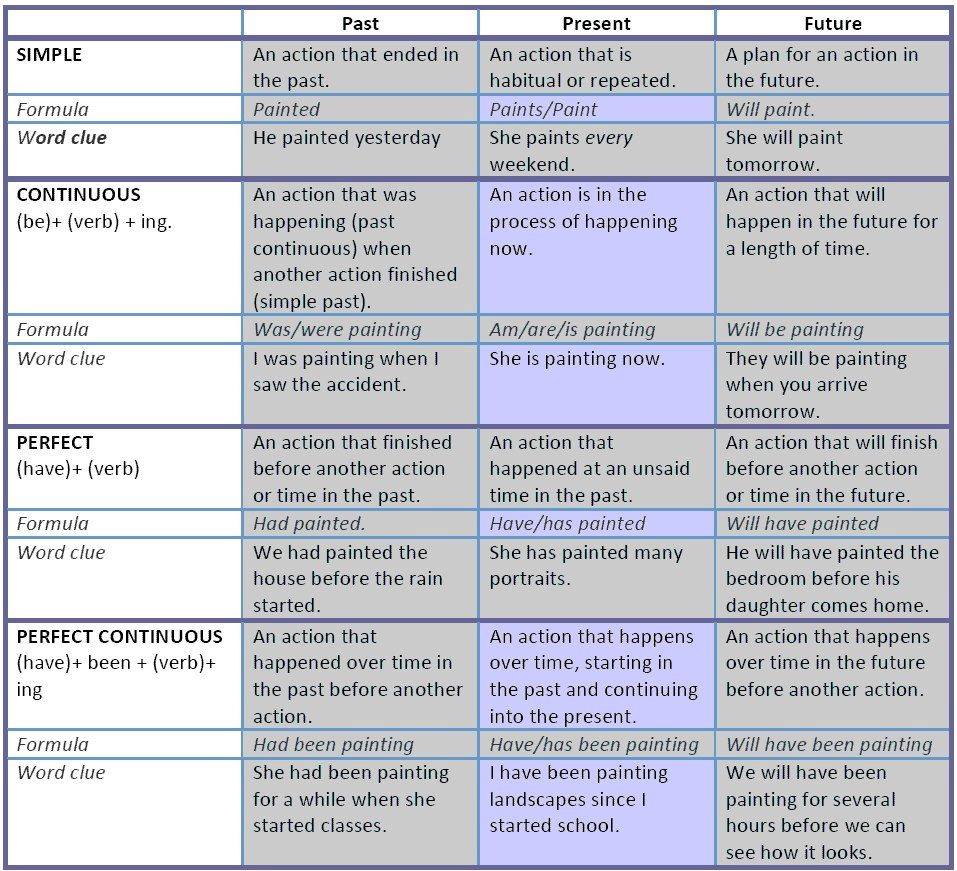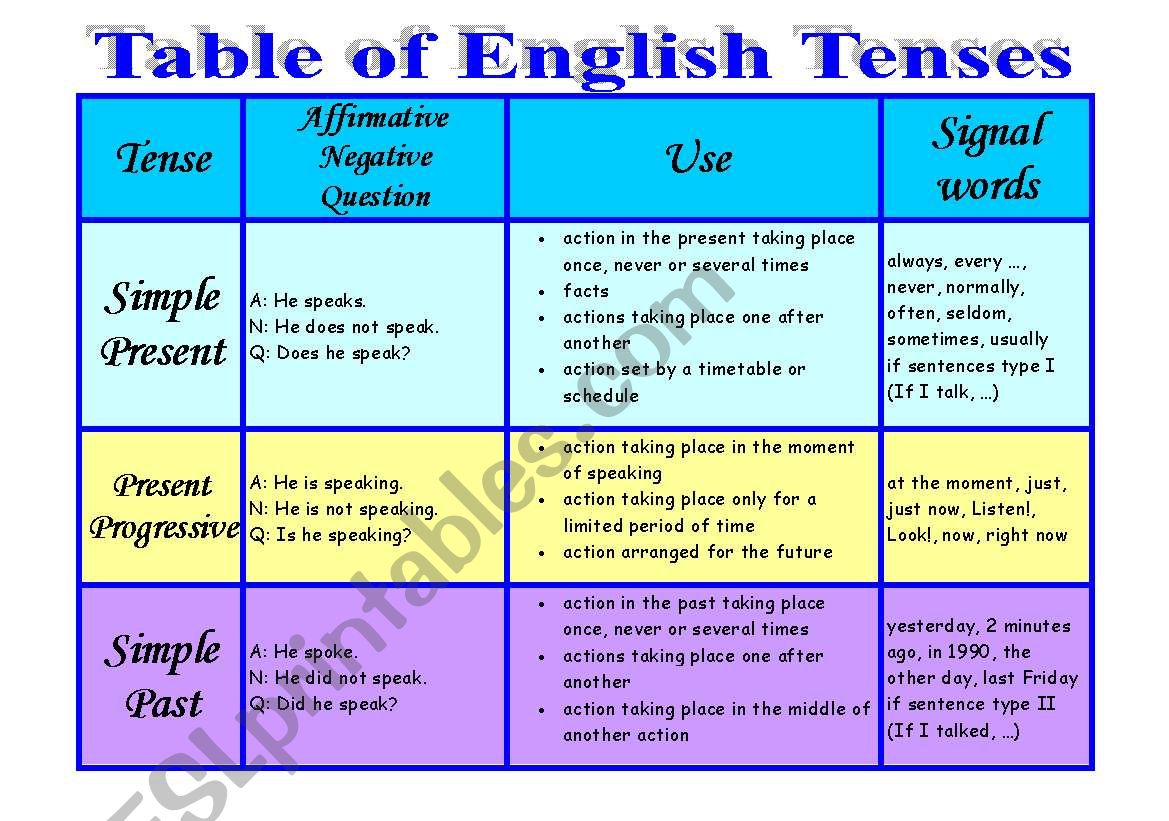


I had been working for three hours when they called about the event.

Perfect Continuous Verb Tenses Table Perfect Continuous Tenses Since 1988, today, for three hours, yet, recently…įor three hours, by the time Ĭontinuous Verb Tenses Table Continuous Tenses I will not have worked 80 hours by next Tuesday. Will you have worked 80 hours by next Tuesday? I will have worked 80 hours by next Tuesday. ** Simple Verb Tenses Table Simple Tenses **The following tables illustrate the English verb tenses for the verb ‘work’ in every form. Vs/Ves → Present Simple form for most verbs (goes) V3 → the third form (Past Participle) of an irregular verb V2 → the second form (Past Simple) of an irregular verb Present Simple, Past Perfect) to go to a more detailed post about its usage and examples.īe sure to bookmark this page, so you can easily click back when you need a reminder. You can also click on each verb tense (ex. In the tables below, we break down their usage in the affirmative, negative and question formats. The tenses are categorized into four different forms. The future tense describes things that have not happened yet.The past tense describes things that have already happened.The present tense describes things that are happening right now or things happening continuously.The continuous tenses are utilized for activities that happen more than once over a timeframe.When it comes to English grammar, verb tenses describe at what point in time an action is taking place. Every one of the three tenses have two primary sorts of varieties: simple and continuous.

These varieties discuss the correct time during which activities happen. Obviously on the off chance that it were that straightforward, you wouldn't read this guide! These tenses have a couple of varieties that make them more particular. (There is additionally a perfect tense, yet this article will adhere to the three essential tenses depicted previously.) The future tense is utilized for anything that will occur sooner or later than right at this point. The present tense is utilized for anything that happens at this moment or for general articulations. The past tense is utilized for anything that occurred before this minute in time. There are just three essential tenses in the English dialect: the past, the present, and the future. Learning English tenses can seem difficult at first, but all you need to do is remember a few sentence structures, and learn a few simple rules. Getting the tense wrong in a sentence can lead to confusion and misunderstandings. To understand why the two sentences are different, you need to understand English tenses. Saying “I walk fast” is not the same as saying “I am walking fast.”


 0 kommentar(er)
0 kommentar(er)
